
Calice d'Issey
Françoise Langlois
Sculpture - 45 x 39 x 39 cm Sculpture - 17.7 x 15.4 x 15.4 inch
$2,088
Save your search and find it in your favorites
Save your search to find it quickly
Saved search
Your search is accessible from the favorites tab > My favorite searches
Unsaved search
A problem occurred

Sculpture - 45 x 39 x 39 cm Sculpture - 17.7 x 15.4 x 15.4 inch
$2,088



Sculpture - 32 x 45 x 27 cm Sculpture - 12.6 x 17.7 x 10.6 inch
$2,320

Sculpture - 20 x 24 x 23 cm Sculpture - 7.9 x 9.4 x 9.1 inch
$609

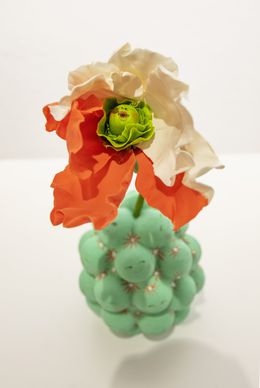
Sculpture - 30 x 11 x 11 cm Sculpture - 11.8 x 4.3 x 4.3 inch
$2,526

Sculpture - 100 x 100 x 1 cm Sculpture - 39.4 x 39.4 x 0.4 inch
$986

Sculpture - 28 x 36 x 21 cm Sculpture - 11 x 14.2 x 8.3 inch
$870



Sculpture - 48 x 26 x 30 cm Sculpture - 18.9 x 10.2 x 11.8 inch
$2,667
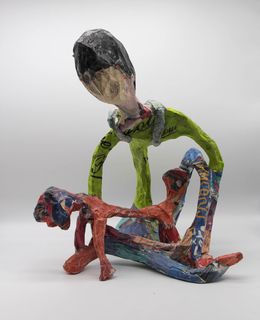
Sculpture - 39 x 30 x 33 cm Sculpture - 15.4 x 11.8 x 13 inch
$418


Sculpture - 40 x 70 x 40 cm Sculpture - 15.7 x 27.6 x 15.7 inch
$2,899





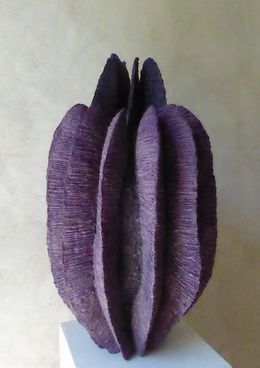




Sculpture - 30 x 40 x 6 cm Sculpture - 11.8 x 15.7 x 2.4 inch
$1,392


Sculpture - 40 x 30 x 6 cm Sculpture - 15.7 x 11.8 x 2.4 inch
$1,392

Sculpture - 30 x 40 x 6 cm Sculpture - 11.8 x 15.7 x 2.4 inch
$1,392

Sculpture - 30 x 40 x 6 cm Sculpture - 11.8 x 15.7 x 2.4 inch
$1,392

Sculpture - 30 x 40 x 6 cm Sculpture - 11.8 x 15.7 x 2.4 inch
$1,392

Sculpture - 30 x 30 x 3.8 cm Sculpture - 11.8 x 11.8 x 1.5 inch
$800



Sculpture - 28 x 40 x 25 cm Sculpture - 11 x 15.7 x 9.8 inch
$870


Sculpture - 40 x 115 x 36 cm Sculpture - 15.7 x 45.3 x 14.2 inch
$4,639

Sculpture - 12 x 8 x 5 cm Sculpture - 4.7 x 3.1 x 2 inch
$232

Sculpture - 130 x 54 x 27 cm Sculpture - 51.2 x 21.3 x 10.6 inch
$5,567



Sculpture - 54 x 34 x 23 cm Sculpture - 21.3 x 13.4 x 9.1 inch
$2,899

Sculpture - 23 x 13 x 20 cm Sculpture - 9.1 x 5.1 x 7.9 inch
$441




Sculpture - 69 x 62 x 25 cm Sculpture - 27.2 x 24.4 x 9.8 inch
$4,059

Sculpture - 23 x 13 x 20 cm Sculpture - 9.1 x 5.1 x 7.9 inch
$522

Sculpture - 23 x 13 x 20 cm Sculpture - 9.1 x 5.1 x 7.9 inch
$441










Sculpture - 43 x 43 x 43 cm Sculpture - 16.9 x 16.9 x 16.9 inch
$3,479




Sculpture - 17 x 31 x 17 cm Sculpture - 6.7 x 12.2 x 6.7 inch
Sold

Sculpture - 40 x 30 x 6 cm Sculpture - 15.7 x 11.8 x 2.4 inch
Sold

Sculpture - 30 x 40 x 6 cm Sculpture - 11.8 x 15.7 x 2.4 inch
Sold
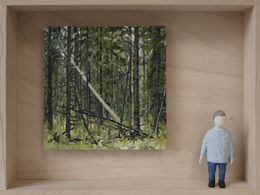
Sculpture - 30 x 40 x 6 cm Sculpture - 11.8 x 15.7 x 2.4 inch
Sold

Sculpture - 30 x 40 x 6 cm Sculpture - 11.8 x 15.7 x 2.4 inch
Sold


Sculpture - 18 x 18 x 2.3 cm Sculpture - 7.1 x 7.1 x 0.9 inch
Sold

Sculpture - 12 x 30 x 20 cm Sculpture - 4.7 x 11.8 x 7.9 inch
Sold



Sculpture - 30 x 40 x 6 cm Sculpture - 11.8 x 15.7 x 2.4 inch
Sold

Sculpture - 30 x 40 x 6 cm Sculpture - 11.8 x 15.7 x 2.4 inch
Sold

Sculpture - 15 x 10 x 10 cm Sculpture - 5.9 x 3.9 x 3.9 inch
Sold
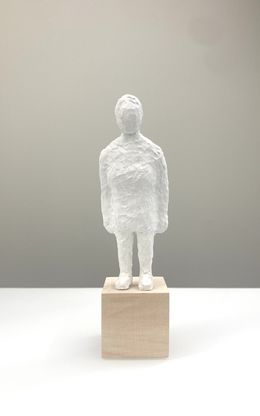







Sculpture - 17 x 31 x 17 cm Sculpture - 6.7 x 12.2 x 6.7 inch
Sold







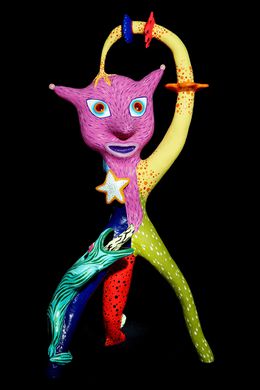



Sculpture - 56 x 23 x 33 cm Sculpture - 22 x 9.1 x 13 inch
Sold
Regularly used in sculpture, paper mache, or papier-mâché, refers to three different techniques. The first one involves applying strips of paper to a structure with a glue to strengthen and solidify the paper. The second technique, pulp paper, was particularly popular in the 20th century. It consists of soaking, boiling and draining paper before mixing the pulp with glue, linseed oil and plaster to obtain a modelling material. Lastly, paper can simply be also be pressed between two moulds.
Originally from China, papier-mâché spread to North Africa in the 7th century, then to Spain in the 11th century, and finally to the rest of Europe and the United States. As paper was very expensive at the time, papier-mâché was therefore a costly material used to create precious objects such as masks, chests, trays, etc.
It was only in the 19th century that the technique became widespread and reached the height of its popularity. Paper was more widely available and therefore cheaper. It was easy to manipulate and anatomists and surgeons started using it to create artificial limbs. Other uses included furniture and toy making as well as set designs.
In the 20th century, it was replaced by more modern materials such as plastic and metal (typically steel or bronze). Pulp paper remains a popular technique and many sculptors and workshops still use it in France (in Temple and Belleville for example) and worldwide.
Papier-mâché is still used by many artists: in his Matériologies series, Jean Dubuffet created amazing textures using this technique; Mélanie Bourlon's workshop, like a 'cabinet of curiosities', is also brimming with animal figures in papier-mâché.
Artsper features Wabé's colorful papier-mâché sculptures, the strange pastel-colored masks of Joanna Glazer, female figures created by Agnès Baillon and Romain Shustrov's puppet-like sculptures.
The steps involved in making a paper mache sculpture are to make the paper mache paste using flour and water, tearing up sheets of paper into small pieces, dipping the paper into the paper mache paste, and applying the paper pieces to the desired form, e.g. to a bowl. The last process is repeated multiple times before the sculpture is left to dry.
To make a paper mache sculpture, you will need flour, water, paper, and an object to create the form of the sculpture, e.g. a bowl or a balloon.
Either glue or a flour-water paste can be used to make paper mache. Both materials work well, although using glue creates a stronger end result.
Choose your preferences
The art is yours
The art is yours